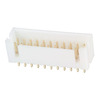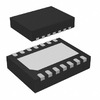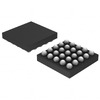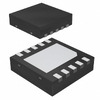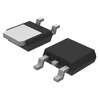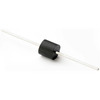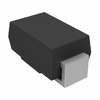A Complete Overview of the MCP3008 ADC
The MCP3008 is a popular 10-bit analog-to-digital converter that makes it easy to connect analog sensors to digital devices like microcontrollers and the Raspberry Pi. This article will guide you through its features, uses, and how it can fit into your projects.Catalog
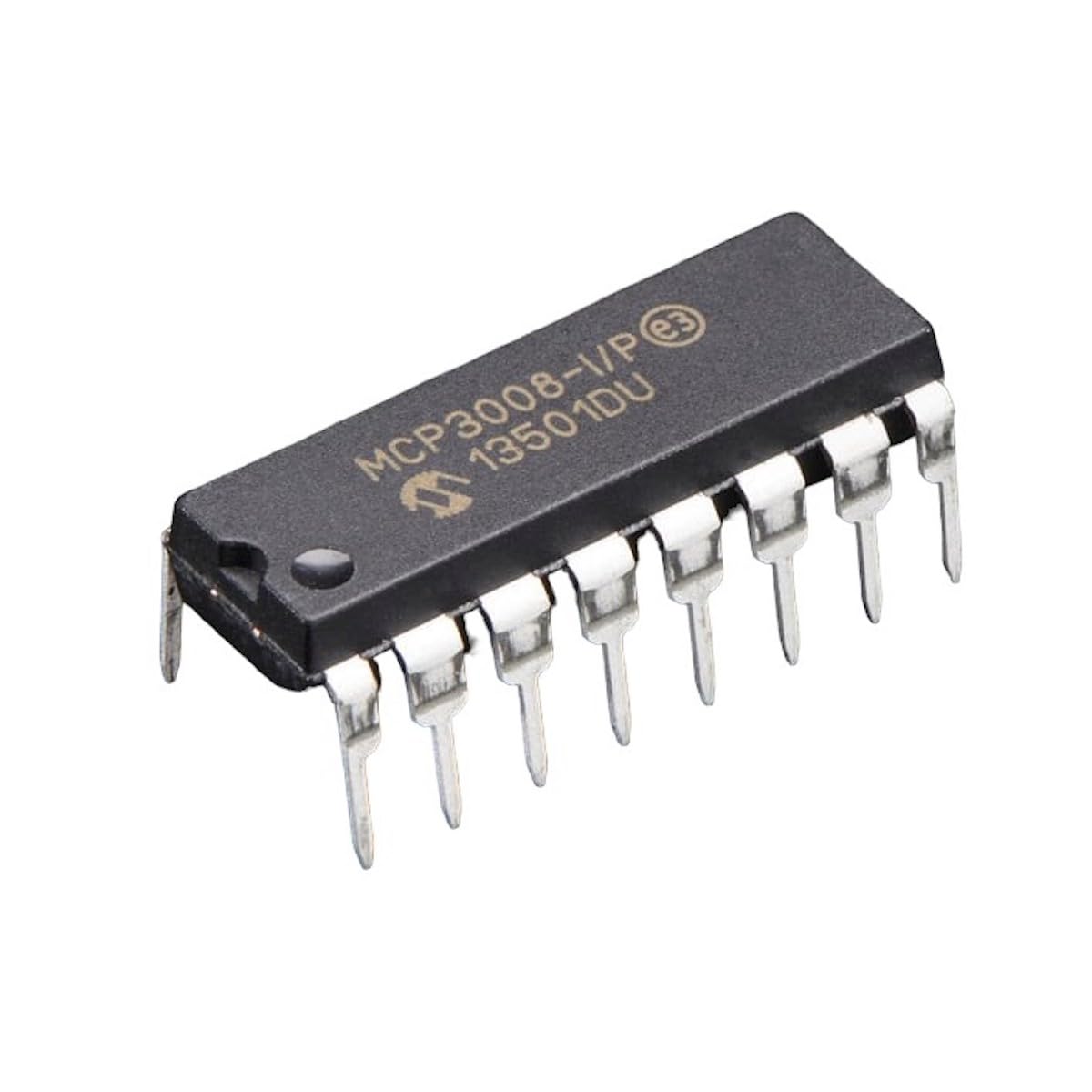
MCP3008 Overview
The MCP3008 is a 10-bit analogue-to-digital converter (ADC) from Microchip Technology. It converts analogue signals into digital data, making it easier for microcontrollers to process inputs like temperature, light, and other sensor data. Supporting up to 8 single-ended inputs or 4 differential pairs, it offers flexibility for various applications. With a conversion speed of up to 200 kSPS, it strikes a balance between performance and ease of integration, fitting well into projects that require dependable analogue-to-digital conversion without high power consumption.
MCP3008 Pin Configuration
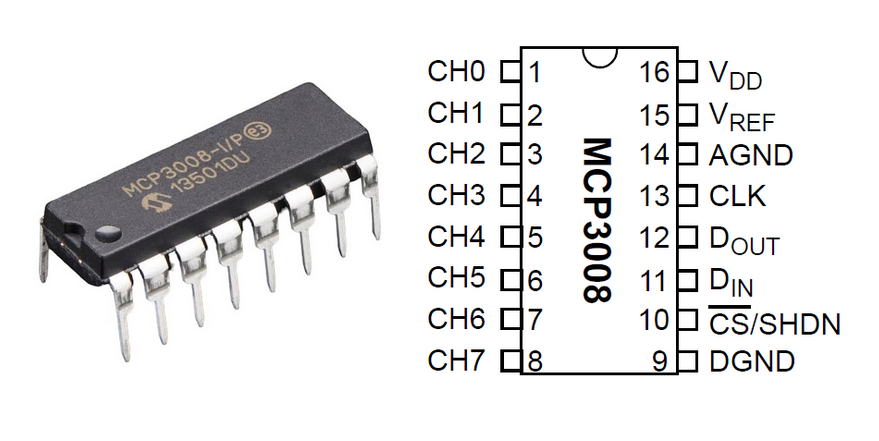
| Pin Number | Pin Name | Description |
| 1,2,3,4,5,6,7,8 | Analog Input Channels | These are the 8 Input pins, to which the analog voltage to be measured is provided. |
| 9 | Digital Ground | Connected to the Ground of the circuit |
| 10 | Chip Select / Shutdown (CS'/SHDN) | This pin is connected to GPIO pin or MCU for turning on or off the IC |
| 11 | Serial Data In (DIN) | Used for SPI communication |
| 12 | Serial Data Out (DOUT) | Used for SPI communication |
| 13 | Serial Clock (CLK) | Used to provide clock signal for SPI communication |
| 14 | Analog Ground | Connected to Ground of the reference voltage |
| 15 | Reference Voltage (VREF) | Connected to reference voltage for ADC Conversion |
MCP3008 CAD Model
MCP3008 Symbol
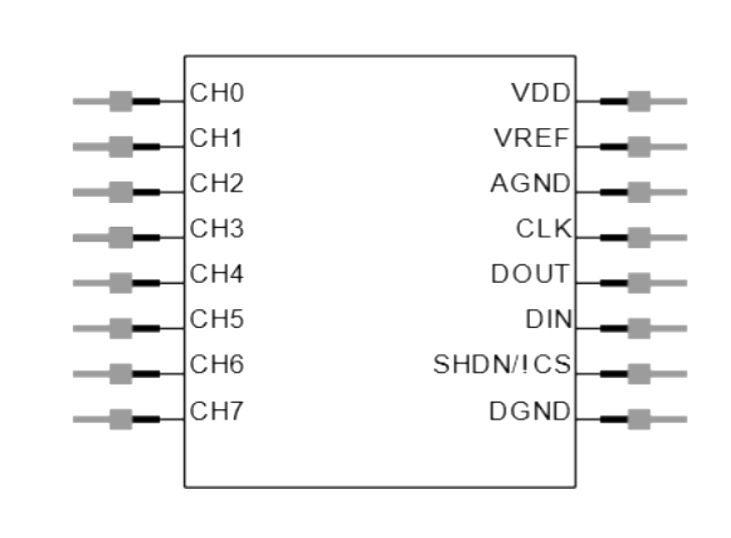
MCP3008 Footprint

MCP3008 3D Model

MCP3008 Specifications
Technical specifications, features, characteristics, and components with comparable specifications of Microchip Technology MCP3008
| Type | Parameter |
| Factory Lead Time | 6 Weeks |
| Mount | Through Hole |
| Mounting Type | Through Hole |
| Package / Case | 16-DIP (0.300, 7.62mm) |
| Number of Pins | 16 |
| Weight | 4.535924g |
| Number of Elements | 1 |
| Usage Level | Industrial grade |
| Operating Temperature | -40°C~85°C |
| Packaging | Tube |
| Published | 1998 |
| JESD-609 Code | e3 |
| Pbfree Code | yes |
| Part Status | Active |
| Moisture Sensitivity Level (MSL) | 1 (Unlimited) |
| Number of Terminations | 16 |
| ECCN Code | EAR99 |
| Terminal Finish | Matte Tin (Sn) |
| Terminal Position | DUAL |
| Number of Functions | 1 |
| Supply Voltage | 5V |
| Terminal Pitch | 2.54mm |
| Base Part Number | MCP3008 |
| Pin Count | 16 |
| Operating Supply Voltage | 5V |
| Polarity | Unipolar |
| Configuration | MUX-S/H-ADC |
| Number of Channels | 8 |
| Interface | SPI, Serial |
| Max Supply Voltage | 5.5V |
| Min Supply Voltage | 2.7V |
| Nominal Supply Current | 425μA |
| Number of Bits | 10 |
| Input Type | Pseudo-Differential, Single Ended |
| Architecture | SAR |
| Number of Inputs | 4, 8 |
| Converter Type | ADC, SUCCESSIVE APPROXIMATION |
| Reference Type | External |
| Data Interface | SPI |
| Resolution | 1.25 B |
| Sampling Rate | 200 ksps |
| Voltage - Supply, Analog | 2.7V~5.5V |
| Voltage - Supply, Digital | 2.7V~5.5V |
| Number of Analog In Channels | 8 |
| Sampling Rate (Per Second) | 200k |
| Output Bit Code | BINARY |
| Linearity Error-Max (EL) | 0.10% |
| Integral Nonlinearity (INL) | 1 LSB |
| Sample and Hold / Track and Hold | SAMPLE |
| Conversion Rate | 200 ksps |
| Ratio - S/H | 1:1 |
| Analog Input Voltage-Max | 5V |
| Signal to Noise Ratio (SNR) | 200 dB |
| Differential Nonlinearity | 1 LSB |
| Min Supply Voltage (DC) | 2.7V |
| Height | 3.3mm |
| Length | 19.05mm |
| Width | 6.35mm |
| REACH SVHC | No SVHC |
| Radiation Hardening | No |
| RoHS Status | ROHS3 Compliant |
| Lead Free | Lead Free |
Parts with Similar Specifications to MCP3008
The parts on the right have specifications similar to the Microchip Technology MCP3008
| Part Number | Manufacturer | Package / Case | Number of Inputs | Number of Pins | Number of Bits | Sampling Rate | Polarity | Interface | Integral Nonlinearity | Differential Nonlinearity | Min Supply Voltage | Supply Voltage |
| MCP3008-I/P | Microchip Technology | 16-DIP (0.300, 7.62mm) | 4, 8 | 16 | 10 | 200 ksps | Unipolar | SPI, Serial | 1 LSB | 1 LSB | 2.7 V | 5 V |
| MCP3208-CI/P | Microchip Technology | 20-DIP (0.300, 7.62mm) | - | 20 | 12 | 38 ksps | Unipolar | - | 1 LSB | 1 LSB | 4.5 V | 5 V |
| TLC1543CN | Texas Instruments | 16-DIP (0.300, 7.62mm) | 4, 8 | 16 | 10 | 100 ksps | Unipolar | SPI, Serial | 2 LSB | 2 LSB | 2.7 V | 5 V |
| MCP3204-CI/P | Microchip Technology | 14-DIP (0.300, 7.62mm) | 2, 4 | 14 | 12 | 100 ksps | Unipolar | SPI, Serial | 2 LSB | 1 LSB | 2.7 V | 5 V |
| MCP3004-I/P | Microchip Technology | 14-DIP (0.300, 7.62mm) | 2, 4 | 14 | 10 | 200 ksps | Unipolar | SPI, Serial | 1 LSB | 1 LSB |
MCP3008 Features
Resolution
The MCP3008 offers a 10-bit resolution. This means it can divide the analogue input signal into 1024 steps, providing a detailed representation of the analogue signal in digital form.
Differential and Single-Ended Channels
It has 4 differential or 8 single-ended input channels, allowing you to measure multiple signals either individually (single-ended) or in pairs (differential), giving flexibility for various sensing needs.
Sample and Hold
The on-chip sample and hold feature lets the ADC capture the input voltage at a specific point in time, holding it steady for accurate conversion to digital, which is especially helpful when signals fluctuate.
SPI Interface
The MCP3008 uses an SPI (Serial Peripheral Interface), which makes it compatible with many microcontrollers. The SPI interface allows for fast and reliable data transfer with minimal wiring.
Low Power Consumption
Built with low power CMOS technology, the MCP3008 is efficient and can operate with minimal power, ideal for applications where conserving battery life is a priority.
Temperature Range
With an operating temperature range from -40°C to +85°C, the MCP3008 is suitable for both industrial and consumer projects, making it versatile for various environments.
Wide Voltage Range
The MCP3008 works with a single supply voltage of 2.7V to 5.5V, making it compatible with many common 3.3V and 5V systems, from microcontrollers to embedded boards.
Package Options
Available in PDIP, SOIC, and TSSOP packages, the MCP3008 provides options for both through-hole and surface-mount designs, offering flexibility for different setups.
MCP3008 Functional Block Diagram
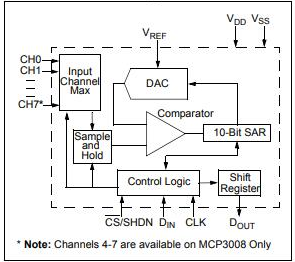
MCP3008 Applications
Sensor Interface
The MCP3008 can be used as a sensor interface, converting analogue signals from sensors like temperature or light into digital data that microcontrollers can process.
Process Control
In process control applications, the MCP3008 is used to monitor and control variables in manufacturing and automation by reading signals from various sensors.
Data Acquisition
The MCP3008 is a good choice for data acquisition systems, collecting data from multiple sensors and converting it to a digital format for analysis and monitoring.
Battery-Operated Systems
With its low power usage, the MCP3008 suits battery-operated systems where efficiency is important, allowing for longer battery life in portable devices.
MCP3008 Equivalent
• PCF8591
Where to Use MCP3008?
The MCP3008 is ideal for projects involving analogue sensors that output variable voltages, like temperature or light sensors. It works with both 3.3V and 5V systems, making it compatible with microcontrollers like Arduino and Raspberry Pi. Using a successive approximation register (SAR) for conversion, the MCP3008 delivers reliable performance in a straightforward setup. While it may not be the fastest ADC, its affordability and ease of use make it a popular choice for many applications.
How to Use MCP3008?
The MCP3008 is known for being easy to use and works with just a few components. Here's a simple application circuit to help you understand how it works.
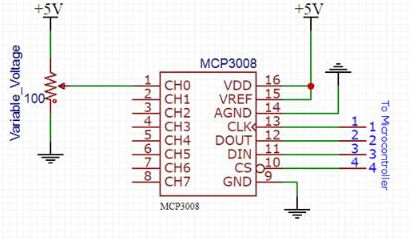
In this diagram, the operating voltage is set to 5V, but you can use any voltage between 2.7V and 5V. The ADC inside the MCP3008 uses the Successive Approximation Register (SAR) method to measure the analog voltage. To do this, it needs a reference voltage. This reference voltage should always be less than the operating voltage, but in most cases, they are the same. In this example, the reference voltage is tied to 5V, just like the Vcc pin.
The MCP3008 has eight channels (CH0 to CH7), which you can use to feed in the analog voltages you want to measure. The maximum voltage each channel can measure is equal to the reference voltage—in this case, 5V. The ADC measures the input voltage with a 10-bit resolution. This means that an input voltage between 0V and 5V will be converted to a digital value ranging from 0 to 1023. If you want to convert this digital value back into the original voltage, you can use this formula:

In the circuit, the system voltage is set to 5V, and the ADC has 1024 steps for measurement. After the MCP3008 measures the analog voltage, it sends the result to a microcontroller or microprocessor using SPI communication. The CS, Din, Dout, and Clock pins of the MCP3008 connect to the corresponding SPI pins on your microcontroller. To get the ADC value from the selected channel, you send the control bit data via SPI. The MCP3008 will then respond with the digital value corresponding to the measured analog voltage.
MCP3008 Package
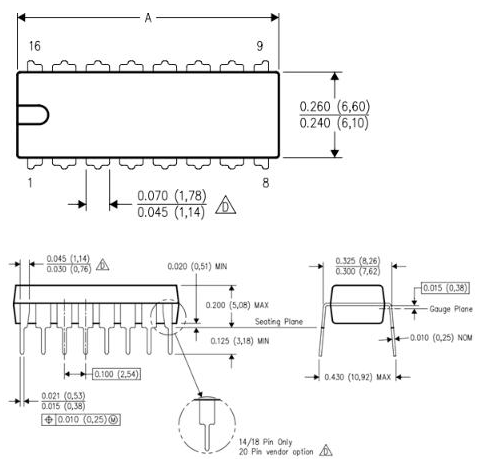
MCP3008 Manufacturer
Microchip Technology is a recognized leader in embedded solutions, offering products like the MCP3008 that make system integration easier. Known for reliable and user-friendly components, Microchip supports a range of industries by providing tools and products that simplify design processes. Their commitment to accessible solutions helps users, from hobbyists to professionals, bring projects to life with less complexity.
Datasheet PDF
MCP3008-I/P Datasheet:
MCP3208-CI/P Datasheet:
TLC1543CN Datasheet:
MCP3204-CI/P Datasheet:
MCP3004-I/P Datasheet:
About us
ALLELCO LIMITED
Read more
Quick inquiry
Please send an inquiry, we will respond immediately.
Frequently Asked Questions [FAQ]
1. Where can I find the MCP3008 pinout?
The MCP3008 has 8 channels and a 10-bit resolution, allowing it to measure up to 8 different analogue voltages. It reads voltages from 0-1023 and sends this data to a microcontroller or processor via SPI communication.
2. How do I use the ADC on the MCP3008?
To set up the MCP3008 as an Analog-to-Digital Converter (ADC) with the Raspberry Pi, follow a basic tutorial that covers wiring, configuring SPI, and reading analog inputs on the Pi.
3. How do I connect an MCP3008 to an Arduino?
The MCP3008 is a 10-bit ADC with built-in sample-and-hold circuitry. It communicates through a simple serial interface compatible with SPI, making it easy to connect to an Arduino. It supports a wide voltage range (2.7V – 5.5V) and uses low current, allowing it to operate with only 5 nA in standby mode and 320 µA when active.
4. What is the maximum input voltage for the MCP3008?
The MCP3008’s maximum input voltage is based on the reference voltage set during configuration. For example, if your reference voltage is 5V, that is the highest analogue input voltage the MCP3008 can read accurately.
5. Where can I download the Adafruit MCP3008 library?
The Adafruit MCP3008 library, designed for easy integration of the MCP3008 8-Channel 10-Bit ADC with SPI Interface, is available on the Adafruit website and other coding repositories.
6. What does MCP3008 stand for?
The MCP3008 is an affordable 8-channel 10-bit ADC. Its resolution is similar to an Arduino Uno, but it has the advantage of 8 channels, making it a great choice for reading multiple analogue signals on platforms like the Raspberry Pi.
7. What is the MCP3008 10-bit ADC?
The MCP3008 is a 10-bit ADC that combines reliable performance with low power consumption. This makes it a practical choice for embedded control applications that need analogue-to-digital conversion.
8. How do I read analogue channels on the MCP3008?
The MCP3008 has 8 analogue channels, accessible via the SPI bus. All 8 signals can be read through a single command. The device supports input voltages between 2.7V and 5V, making it suitable for various setups.
9. What is the conversion rate of MCP3004/MCP3008 devices?
Both MCP3004 and MCP3008 can handle conversion rates up to 200 ksps (kilosamples per second). They operate across a wide voltage range (2.7V – 5.5V) and are designed for low current use, with standby currents as low as 5 nA and active currents around 320 µA.

Comprehensive Guide to the nRF9160 Development Kit and Its Applications
on November 5th
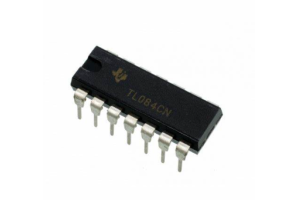
Exploring the TL084CN Operational Amplifier
on November 5th
Popular Posts
-

What is GND in the circuit?
on January 1th 2893
-

RJ-45 Connector Guide: RJ-45 Connector Color Codes, Wiring Schemes, R-J45 Applications, RJ-45 Datasheets
on January 1th 2462
-

Fiber Connector Types: SC Vs LC And LC Vs MTP
on January 1th 2056
-

Understanding Power Supply Voltages in Electronics VCC, VDD, VEE, VSS, and GND
on November 7th 1828
-

Comparison Between DB9 and RS232
on January 1th 1746
-

What Is An LR44 Battery?
Electricity, that ubiquitous force, quietly permeates every aspect of our daily lives, from trivial gadgets to life-threatening medical equipment, it plays a silent role. However, truly grasping this energy, especially how to store and efficiently output it, is no easy task. It is against this background that this article will focus on a type of coin cell battery that may seem insignificant on the...on January 1th 1699
-

Understanding the Fundamentals:Inductance Resistance, andCapacitance
In the intricate dance of electrical engineering, a trio of fundamental elements takes center stage: inductance, resistance, and capacitance. Each bears unique traits that dictate the dynamic rhythms of electronic circuits. Here, we embark on a journey to decipher the complexities of these components, to uncover their distinct roles and practical uses within the vast electrical orchestra. Inductan...on January 1th 1641
-

CR2430 Battery Comprehensive Guide: Specifications, Applications and Comparison to CR2032 Batteries
What is CR2430 battery ?Benefits of CR2430 BatteriesNormCR2430 Battery ApplicationsCR2430 EquivalentCR2430 VS CR2032Battery CR2430 SizeWhat to look for when buying the CR2430 and equivalentsData Sheet PDFFrequently Asked Questions Batteries are the heart of small electronic devices. Among the many types available, coin cells play a crucial role, commonly found in calculators, remote controls, and ...on January 1th 1515
-

What Is RF and Why Do We Use It?
Radio Frequency (RF) technology is a key part of modern wireless communication, enabling data transmission over long distances without physical connections. This article delves into the basics of RF, explaining how electromagnetic radiation (EMR) makes RF communication possible. We will explore the principles of EMR, the creation and control of RF signals, and their wide-ranging uses. The article ...on January 1th 1504
-

CR2450 vs CR2032: Can The Battery Be Used Instead?
Lithium manganese batteries do have some similarities with other lithium batteries. High energy density and long service life are the characteristics they have in common. This kind of battery has won the trust and favor of many consumers because of its unique safety. Expensive tech gadgets? Small appliances in our homes? Look around and you'll see them everywhere. Among these many lithium-manganes...on January 1th 1485


